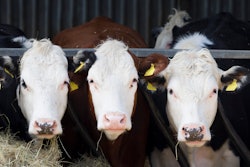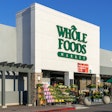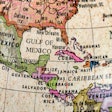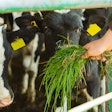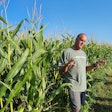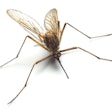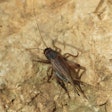
If you’re a gardener like I am, you’ve probably referred to the U.S. Department of Agriculture’s (USDA) Plant Hardiness Zone Map (PHZM) to find out how well certain plants will do in your location or how far into the fall you can expect to still be able to pick fresh vegetables out of your backyard garden. Where I live in the Chicago suburbs, we’ve had several below-freezing nights this fall and I’m still harvesting cold-hardy Brussels sprouts, cabbage and kale.
This week, the USDA released a new version of the PHZM, the first update since 2012. The new map — jointly developed by USDA’s Agricultural Research Service (ARS) and Oregon State University’s (OSU) PRISM Climate Group — is more accurate and contains greater detail than prior versions, according to the USDA.
“The 2023 map is based on 30-year averages of the lowest annual winter temperatures at specific locations, is divided into 10-degree Fahrenheit zones and further divided into 5-degree Fahrenheit half-zones,” USDA said in a press release.
Gardeners and growers are the most frequent users of the map, but researchers and scientists also refer to it for their work.
“For example, the USDA Risk Management Agency refers to the map’s plant hardiness zone designations to set certain crop insurance standards,” USDA said. “Additionally, scientists incorporate the plant hardiness zones as a data layer in many research models, such as those modeling the spread of exotic weeds and insects.”
Plant hardiness zone designations represent what’s known as the “average annual extreme minimum temperature” at a given location during a particular time period – not the coldest is has been or will be at a certain location.
An indication of climate change?
USDA says the new PHZM is generally about one quarter-zone warmer that reported in the 2012 map throughout much of the U.S. But it stresses that the temperature updates to plant hardiness zones “are not necessarily reflective of global climate change because of the highly variable nature of the extreme minimum temperature of the year, as well as the use of increasingly sophisticated mapping methods and the inclusion of data from more weather stations.”
The map’s developers caution against attributing temperature updates to some zones as “reliable and accurate indicators of global climate change,” as climate change is based on trends recorded over longer periods of time. However, the map updates can serve as a reminder that weather trends change over time and gardeners are not the only ones who need to adapt to this reality.
Risks and opportunities for the agrifood industry
As I’ve interviewed various experts on mycotoxins and their risks to crops commonly grown for use as feed ingredients, they often point out that a changing climate also means a change in the mycotoxins and other crop diseases that may thrive in a certain location.
For example, aflatoxin is typically seen in the southern regions of the U.S. in crops such as corn and cottonseed. But, one expert told me in 2021, the 2020 growing season saw optimal conditions for the development of aflatoxin spread far north and east into the primary corn growing regions.
“If drought events like (in recent years) become more prevalent across different regions, we could continue to see changes like this in mycotoxin contamination patterns with subsequent effects on the feed and food chain,” she said.
Mycotoxin prevalence has also increased in recent years, although it is unclear whether this is due to changing weather patterns, better detection technology or greater understanding of mycotoxins.
But it’s not all doom and gloom; some regions may benefit from climate change in terms of crop production. Cooler temperate regions may see greater yields due to longer growing seasons, a wider variety of crops may be grown, and storage conditions could be improved in drier locales, one expert told me.
The bottom line is everyone from small backyard gardeners to large agrifood industry players need to be able to recognize these changes and their risks – or benefits – and adapt. Maybe this means growing seasons will shift, crops will be able to be grown in a region where they previously weren’t, more resilient crop varieties will need to be developed, water management practices improved, and mycotoxin monitoring and mitigation will need to be stepped up. This creates opportunities for innovative progress for the agrifood industry to continue to thrive.


